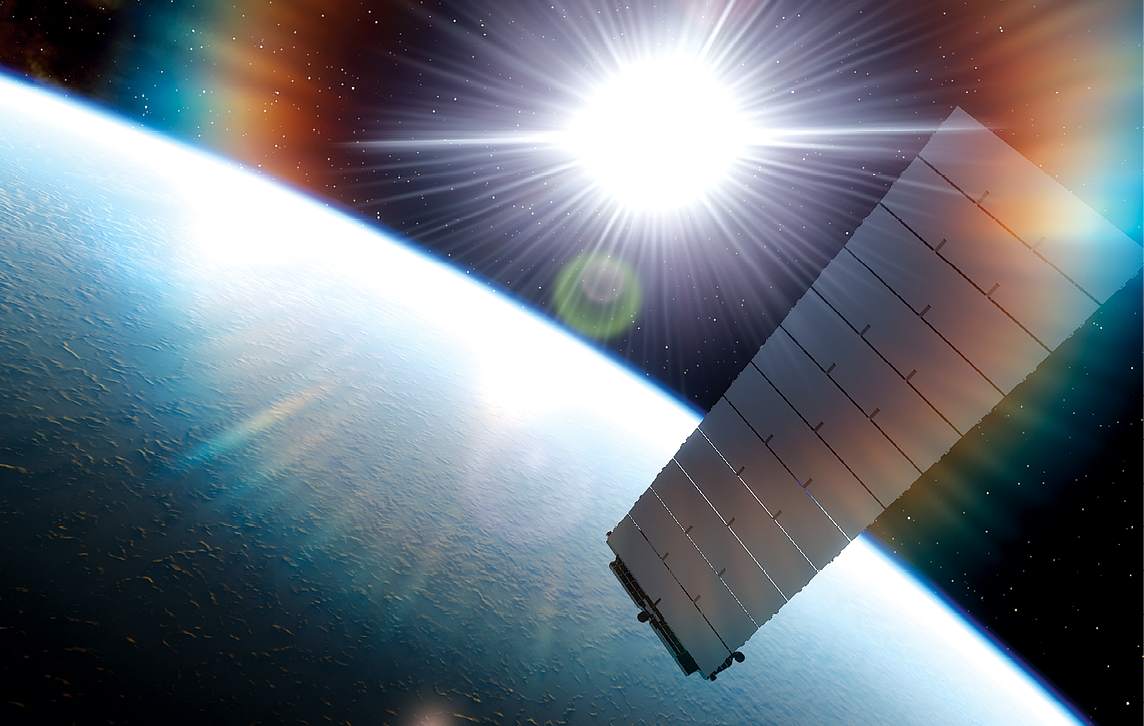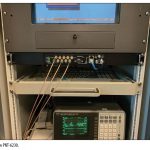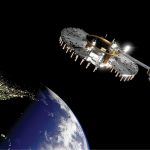At the 2022 Munich Satellite Navigation Summit, speakers from the US and Europe talked about LEO satellites for new PNT services.
Tomorrow’s LEO mega-constellations will operate in combination with existing GNSS solutions and/or provide full-fledged PNT services on their own. They will help to power the latest autonomous applications, leveraging New Space technologies, 5G and more.
The Munich Satellite Navigation Summit is known for its high-level exchanges among top representatives of the space and navigation powers, but the conference also features a wealth of nitty-gritty technology sessions that get right to the bottom of the latest trends. Brian Manning, CEO of California-based Xona Space Systems, got the ball rolling at the session on new space-based navigation concepts, telling online participants, “Trusted location and time are among the most foundational pillars of safe operation of really any device or vehicle, and this is becoming even more critical as autonomy continues to rise and human interaction is reduced. Our aim is to enable modern technologies, autonomy, drones, robotics, and for these applications to scale to the masses, we need to have robust and trusted PNT that can scale with them.”
GNSS is the dominant PNT technology today, enabling a massive number of user applications, but each user sector has its own needs, its own pain points and threat vectors. Some users are looking for extremely high accuracy and fast convergence, others care more about indoor penetration and jamming protection, or alternatives to GNSS. Still others are focused on reducing power consumption and multipath effects. And then there are the automotive autonomy folks, who tend to want it all.
“Accuracy-wise, the ideal navigation solution today needs to target an-inch-in-a-minute-level performance,” said Manning, “but it also needs to be very, very reliable at a decimeter-or-so level, and it has to do that without any sort of local infrastructure. In the modern world, we start to see that LEO [low-Earth-orbit] is the obvious winner.”
Xona is developing lower-cost satellites using off-the-shelf components, with high-power signals to reach indoors. Rapid geometry changes in LEO mean fast convergence. Unlike existing GNSS architectures, Manning said, which were developed under a Cold-War paradigm, new LEO architectures do not need to feature higher orbits, public-sector-based control systems or rugged, radiation-resistant hardware.
In with the new
“The most prominent modern users we see are in the commercial markets,” he said, “as opposed to the military, and keeping autonomous vehicles in line has become a much hotter issue than getting five bombs into the same hole. And even the threat spaces that we’re dealing with – we’re now aiming at protecting against things like cyber attacks and spoofing attacks, as opposed to a tactical nuclear strike.”
Manning raised some eyebrows when he suggested navigation might be among the last of the space-based sectors to fully embrace the New Space era. “We need to start to look beyond some of the classical orbits,” he said. “With a new LEO architecture, you really start taking advantage of some of the other New Space tech, things like cross-links and new signal structures, to create a new-generation navigation constellation with some very unique characteristics.” As for ground control, he said, “There are now a lot of these commercial operators of ground-stations-as-a- service that we can leverage, and certainly in-country domestic control is not necessarily a hard requirement.
Xona plans to launching its first two demonstration satellites later this year (2022). “Our Pulsar constellation is designed to provide secure, high-performance PNT services, planned around civilian use. The service doesn’t need any sort of external corrections to reach centimeter-level accuracy, and in fact it actually has GNSS corrections baked in as part of the service, as well as other GNSS enhancements that go beyond just corrections, such as security and integrity monitoring, acquisition aids, and modern encryption and authentication techniques.” The business model will be PNT-as-a-service, and Manning said Xona is already working with Tier 1s and receiver manufacturers to integrate Pulsar into different user devices for a late-2024, early-2025 initial service launch.
LEO in a layered PNT system
The European Space Agency’s Lionel Reis, Head of the Radio Navigation Systems and Techniques Section, ESTEC, described LEO PNT as a key part in a larger, multi-layered system-of-systems for ubiquitous, reliable, decimeter-level PNT, reaching from indoors to the Moon. “Multi-GNSS, with dead reckoning, augmentation data, integrity data, is very successful, and already covers a lot of needs. But now we see the trends inspiring technological evolution in PNT going beyond existing GNSS, mostly addressing more demanding use cases, like highly accurate and reliable positioning for autonomous systems, autonomous vehicles and UAVs. Another example is indoor positioning, with industrial IoT [Internet of things], with machine control in factories.”
Today’s users want fully secure and resilient PNT, low-energy positioning and low energy-per-fix for asset tracking. “It appears very likely that a single system, one-size-fits-all, will not be suitable to address all of those more demanding needs,” Reis said. Multi-GNSS, he insisted, has real advantages, including global coverage, high accuracy, below one centimeter everywhere, free availability, and very high stability and security. “Nevertheless,” he said, “like any other solution, it has its shortcomings, like its well-known, low signal strength.”
Reis said ESA would expand the system-of-systems approach to encompass mid-to-high-orbit GNSS, together with a LEO layer, and a third layer, closer to the ground, covering PNT hotspots. “MEO GNSS systems continue to evolve,” Reis said. “At ESA we are looking at Galileo Second Generation as well as new EGNOS developments. At the same time, a layer of LEO satellites can leverage the higher dynamics of these lower orbits, and they can introduce new frequencies. So this LEO layer could involve GNSS-like systems, or 5G non-terrestrial networks, the space-based component of 5G. Or it could be VDES [VHF Data Exchange System] signals, which were developed for maritime, for example. And then at the lowest level, we could be talking about elements on the ground or on UAVs. We can also leverage dead reckoning and advances in user technologies, such as antenna diversity, sensor fusion, etcetera.”
And in with the old
Reis said today’s LEO initiatives hearken back to past concepts: “We know TRANSIT was the first operational LEO PNT system, in the 1960s and 70s. In the 90s, the INES concept looked at how to reuse different kinds of signals to provide positioning service from LEO. And today’s initiatives are motivated by growing expectations for alternative PNT and emerging needs.” New Space opportunities, he said, can lower the cost of deployment of large space infrastructure in LEO, and since about 2018, we have seen an acceleration of commercial and institutional initiatives worldwide.
Recent LEO initiatives include the Chinese CentiSpace project, institutional initiatives in the US, including DARPA’s Blackjack project, as well as commercial projects like the one being advanced by Xona. “The UAE are considering deploying a GNSS augmentation system in LEO,” Reis said, “and in Europe we have recent LEO initiatives in France, in Finland and at European Union level in the framework of the Secure Space Connectivity System.
“Again, the really interesting opportunities for LEO are to bring frequency diversity, beyond the sweet point of the LS band, measurement diversity, and additional capabilities on top of what other space-based PNT like GNSS are providing, such as indoor coverage. LEO also features higher dynamics compared to MEO, and this results in an overall error decorrelation process. This can result in the whitening of multipath. There is the faster convergence time of PPP, and finally it may mean shorter outages. Also, New Space and LEO mega-constellations are introducing opportunities for hosted payloads and satcom integration, reduced deployment cost and also reduced time-to-market, thanks to the streamlining of manufacturing and launch.”






